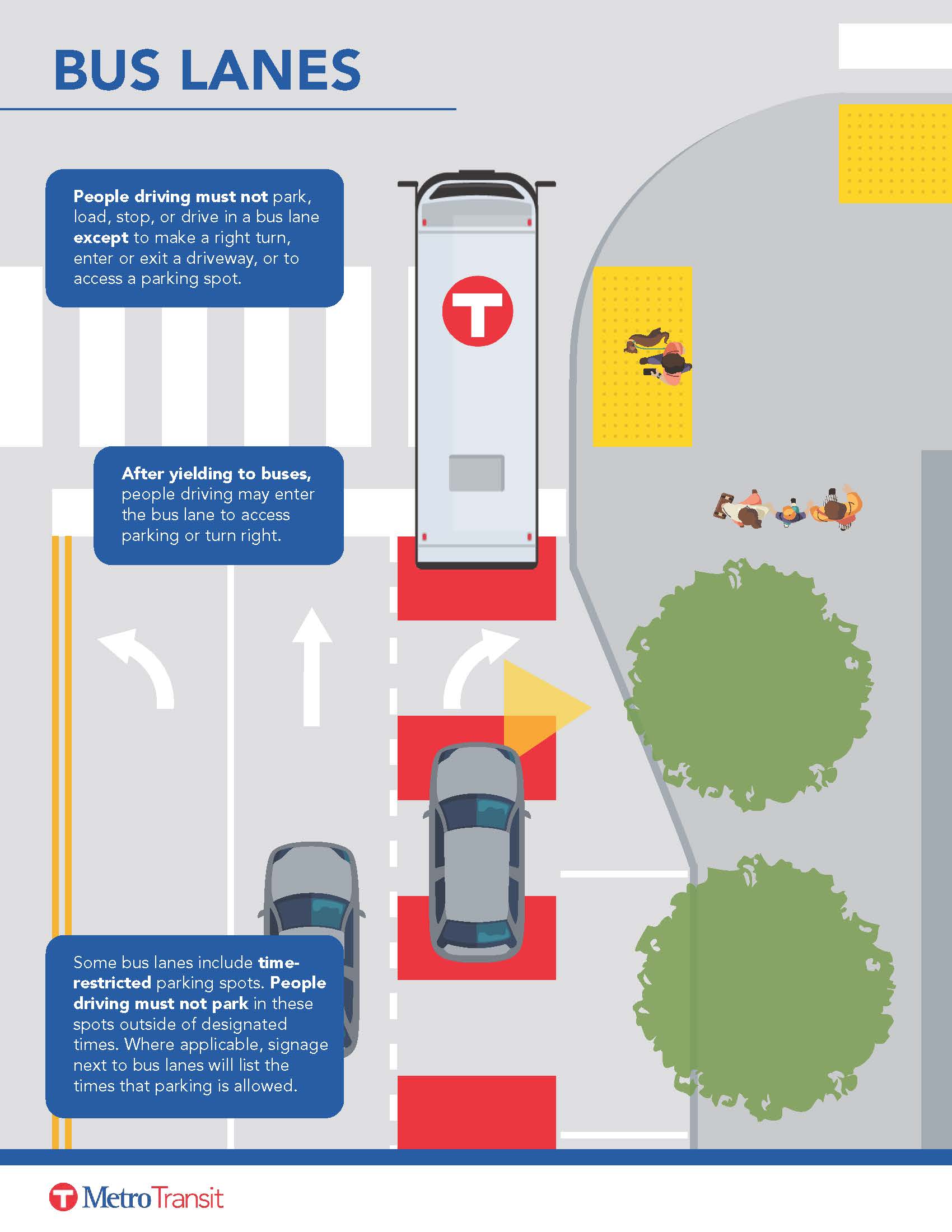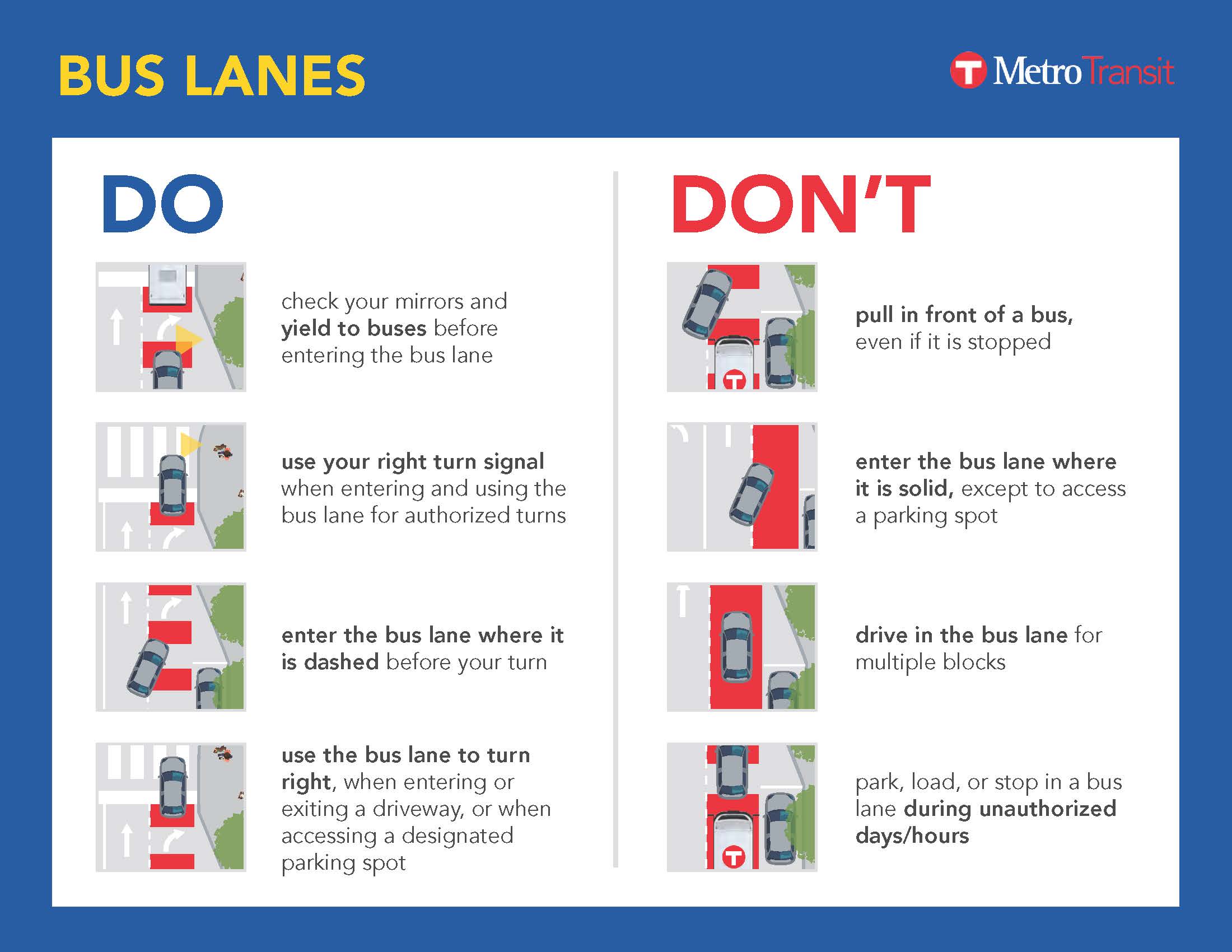Speed and Reliability Program
Metro Transit and local partners are expanding the use of bus lanes, signal technology, and other tactics to improve transit speed and reliability across the region.
Recent efforts include the addition of bus lanes on segments of Hennepin and Lyndale avenues and Lake Street, among other corridors.
Many of these improvements are being advanced as Metro Transit builds and opens more bus rapid transit lines. Three new bus rapid transit lines will open in 2025, including the state's first bus rapid transit line operating primarily within bus-only lanes, the METRO Gold Line.
Better Bus Routes
The Better Bus Route program aims to improve local bus routes not identified for near-term bus rapid transit investments. The approach is to implement quick, low-cost improvements that make a noticeable difference in the customer experience.
|
Project Goal
|
Strategy
|
|
Improve the speed and reliability of service
|
Consolidate bus stops for up to ¼ -mile spacing, or making other adjustments to improve bus stop placement
|
|
Improve customer access at the bus stop
|
Ensure that all bus stops are ADA-accessible; if not, install concrete pads to improve accessibility
Expand the no-parking zone to ensure buses can fully pull to the curb at the bus stop
|
|
Improve the waiting experience at the bus stop
|
Install new shelters at qualifying bus stops
|
|
Make service easier for everyday customers to understand
|
Simplify the route and schedule; consider removing low-ridership branches or route deviations
|
|
Increase bus driver satisfaction
|
More consistent travel times, more rest times at both ends of the route, and look for opportunities to improve restroom access
|
Between 2018 and 2024, Metro Transit completed six Better Bus Route projects – routes 2, 63, 3, 22, 17 and 4.
Bus lanes
Bus lanes are generally created by repurposing traffic lanes or parking lanes. Metro Transit works with roadway authorities (cities, counties, and MnDOT) to identify and implement bus lanes based on a combination of factors, including transit volume and demand, the potential to reduce total perosn delay, and traffic patterns.
Active projects
How to use a bus lane

What to do / not do in a bus lane

Bus-only shoulders
On highways, buses may also operate in designated bus-only shoulders. Since 1991, MnDOT and Metro Transit have partnered to create more than 300 miles of bus-only shoulders, a cost-effective innovation allowing buses to bypass rush-hour freeway traffic.
Transit Signal Priority
Transit Signal Priority (TSP) modifies the traffic signal timing at intersections to favor transit vehicles. Like any vehicle, a bus or train that just misses a green light normally must wait until the next green, which can take 30 to 60 seconds or more. By using TSP, delays can be reduced, improving schedule adherence and the customer experience.
TSP has been installed at 163 intersections, with many more planned. In the next few years TSP will be added to most intersections on the METRO B and E lines, and at select intersections on Route 63.
Looking ahead, Metro Transit will explore “hardware lite” TSP systems that use internet communication between the bus driver, a cloud-based server, and traffic signals to generate and send requests for priority. These promise to provide greater flexibility and faster deployment.
Spot improvements
Spot improvements are low-cost, small- to mid-scale changes to help keep buses moving more reliably. Improvements range from adjusting the no-parking zones near bus stops to help buses move in and out of stops more smoothly, to adding stop bars at locations where a bus needs to make a tight turn. Each support safer and more efficient operation of buses; we will partner with city, county, and state partners to make necessary improvements.